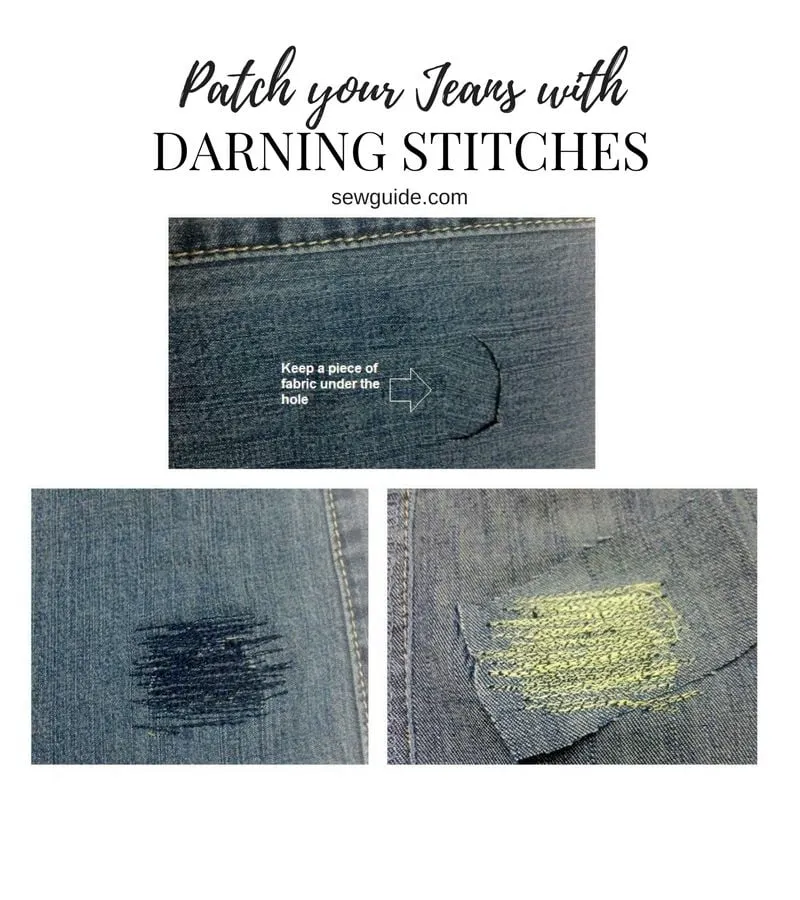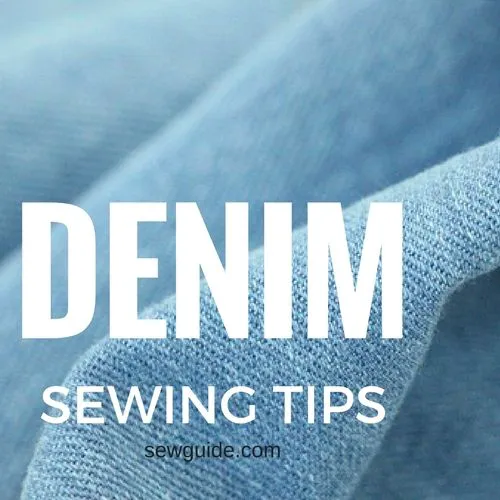Sewing on Denim: Tips & Tricks for a Professional Finish
Master the Art of Sewing on Denim: A Beginner's Guide
Master the Art of Sewing on Denim: A Beginner's Guide
How To Sew A Patch
Universal Instructions
Whatever you’re fixing, whether it’s a jacket or jeans, take a sharp pair of scissors and clear away any frayed ends, then turn your article of clothing inside out.
Slip a piece of paper under the hole and trace it with your pen.
Remove the paper and draw an extra half inch around the border of what you’ve already traced.
This will allow you to have ample room to fix your patch fabric to the item of clothing. Cut out the stencil and lay it over your fabric. Once that’s done, cut out the patch.
Sew On A Patch With the Sewing Method
Lay the piece of fabric you’ve cut-out on top of the inside-out article of clothing, and use a few pins to secure it down.
If you can, measure the length of the area you’ll be working on and measure out thread more than double the length.
Thread one end through the needle and pull, so that the two ends of the thread are parallel to each other.
Holding both ends, twist them into a loop and push the ends through to form a knot.
Take your needle and thread, and sew your first stitch. For this project, the tighter the stitch, the better. Any manner of stitch should do the trick.
If you plan to use a slip stitch (in which your needle will exit or end on one side of fabric, and then go through the patch fabric in a diagonal angle rather than sewing along the edges) then keep the length of the stitch small, or you’ll run the risk of the fabric moving or the thread bunching out.
Once you’ve finished sewing, remove the pins and secure the end of the stitch by tying it off.
Here’s an example in the video below using denim.
Ta-da! You’re done.
Depending on what you used, you may want to consider also sewing down the patch for extra durability.
Any tips for sewing on a patch? Let us know in the comments!
Which thread should I use for sewing denim ?
Polyester thread or cotton covered polyester thread is sturdy enough for denim stitching. Eg: Gutermann Thread Denim 6 SPLS Denim Multicoloured is a 100% polyester thread in colors which are used for jeans stitching.
You can also use top-stitching thread to sew denim; if you do not have top-stitching thread, use two spools of thread at once to get the effect of a thicker thread.
Your sewing machine may have an extra spool pin; attach it and thread the sewing machine and the needle with both the thread from the spools as one.
Usually, a contrast color like orange is used for topstitching denim fabric in jeans. Your choice of thread color would depend on the effect you want on the garment. I think a bright contrasting color would be good (like yellow, pink, or lime green). You will have to try it on a scrap piece of fabric because denim fabric comes in various shades, and a color that looks good against a hue of indigo may not look the same on another shade of blue.
Buttonhole twist is also ideal as a topstitching thread because of its strength and attractive sheen.
When using a heavy thread on the top thread spool, use the regular thread in the bobbin.
How to finish the fabric edges of denim?
Selvage denim comes with fabric edges finished with a very bright-colored band. But other denim fabric will have to have the fabric edges finished, as the denim frays a lot.
In jeans, a flat felled seam finish is most commonly used. This seam finish encloses the fabric edge as well. But this is very difficult on an ordinary sewing machine, especially if you are sewing with heavyweight denim.
An overcast stitch / serger is used otherwise to finish the fabric edges of denim . You can also use pinking shears, as this cutting tool will give a zig zag edge to the edges making fraying impossible. Some of the fabric edge finishes may prove to be unsuitable for denim because of its heavy nature.
How to sew seams when sewing denim ?
Denim jean seams are usually done with a flat felled seam. Checkout the post on Sewing seams.
If you are using a regular seam, you will have to trim the seams to avoid bulk, especially the seam allowances of facings. Clipping seam allowances every 1 inch, especially for curvy seams, and grading the seam allowances are all necessary when sewing with denim.
It is better if you use a lightweight fabric as a facing so that you do not have to deal with two layers of denim fabric. Even the hem can be finished in this way.
Always press the seams open especially if you are crossing seams. You can use the steam setting in your iron to make the seams behave. Some even use the hammer on the seams – cruel I say- but whatever works.
Denim is a very thick fabric. You do not have to line dresses made with denim. But if you have to, choose lightweight fabric as the lining material.
Do interface buttonholes and behind buttons.
Most Denim clothes have Bar tacks on high-stress areas like the top of pockets- Set your machine for a narrow zigzag, and a very short stitch length. Sew for ¼” and reverse to reinforce.
Hemming jeans – It is a good idea to make the hem of denim garments at least about 1″ wide and double topstitch at the top of the hem to prevent the hem from curling up.



Tegs:
Search
Recent Posts
Subscribe to Updates
Get the latest posts and fashion insights directly in your inbox.